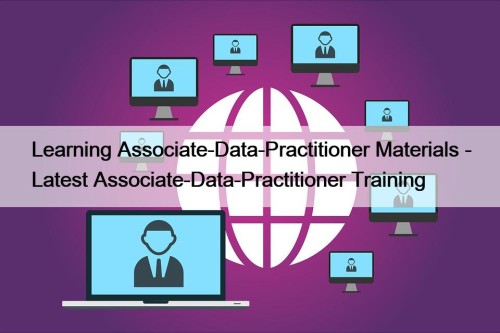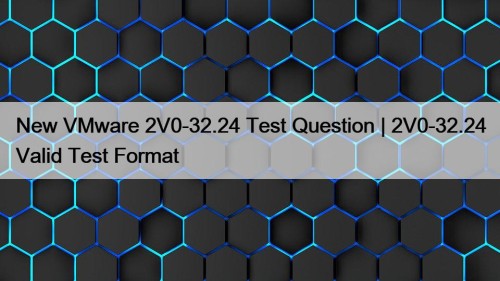Most Popular
 Learning Associate-Data-Practitioner Materials - Latest Associate-Data-Practitioner Training
Learning Associate-Data-Practitioner Materials - Latest Associate-Data-Practitioner Training
To stay updated and competitive in the market you have ...
 Advanced-Cross-Channel Test Study Guide - Advanced-Cross-Channel Test Simulator
Advanced-Cross-Channel Test Study Guide - Advanced-Cross-Channel Test Simulator
P.S. Free & New Advanced-Cross-Channel dumps are available on Google ...
 New VMware 2V0-32.24 Test Question | 2V0-32.24 Valid Test Format
New VMware 2V0-32.24 Test Question | 2V0-32.24 Valid Test Format
Would you like to register VMware 2V0-32.24 certification test? Would ...



Reliable Databricks-Certified-Data-Analyst-Associate Study Materials - Databricks-Certified-Data-Analyst-Associate Download Fee

Considering that our customers are from different countries, there is a time difference between us, but we still provide the most thoughtful online after-sale service twenty four hours a day, seven days a week, so just feel free to contact with us through email anywhere at any time. Our commitment of helping you to Pass Databricks-Certified-Data-Analyst-Associate Exam will never change. Considerate 24/7 service shows our attitudes, we always consider our candidates’ benefits and we guarantee that our Databricks-Certified-Data-Analyst-Associate test questions are the most excellent path for you to pass the exam.
As we all know, sometimes the right choice can avoid the waste of time, getting twice the result with half the effort. Especially for Databricks-Certified-Data-Analyst-Associate study materials, only by finding the right ones can you reduce the pressure and help yourself to succeed. If you haven't found the right materials yet, please don't worry. Maybe our Databricks-Certified-Data-Analyst-Associate Study Materials can give you a leg up which is our company's flagship product designed for the Databricks-Certified-Data-Analyst-Associate exam.
>> Reliable Databricks-Certified-Data-Analyst-Associate Study Materials <<
Databricks Databricks-Certified-Data-Analyst-Associate Download Fee, Databricks-Certified-Data-Analyst-Associate Free Study Material
To save you from loss of money and time, VCEDumps is offering a product that is specially designed to help you pass the Databricks Certified Data Analyst Associate Exam (Databricks-Certified-Data-Analyst-Associate) exam on the first try. The Databricks Databricks-Certified-Data-Analyst-Associate Exam Dumps is easy to use and very easy to understand, ensuring that it is student-oriented. You can choose from 3 different formats available according to your needs. The 3 formats are desktop Databricks-Certified-Data-Analyst-Associate Practice Test software, web-based Databricks Certified Data Analyst Associate Exam (Databricks-Certified-Data-Analyst-Associate) practice exam, and Databricks-Certified-Data-Analyst-Associate dumps PDF format.
Databricks Databricks-Certified-Data-Analyst-Associate Exam Syllabus Topics:
| Topic | Details |
|---|---|
| Topic 1 |
|
| Topic 2 |
|
| Topic 3 |
|
| Topic 4 |
|
| Topic 5 |
|
Databricks Certified Data Analyst Associate Exam Sample Questions (Q16-Q21):
NEW QUESTION # 16
A data engineer is working with a nested array column products in table transactions. They want to expand the table so each unique item in products for each row has its own row where the transaction_id column is duplicated as necessary.
They are using the following incomplete command:
Which of the following lines of code can they use to fill in the blank in the above code block so that it successfully completes the task?
- A. reduce(produces)
- B. explode(produces)
- C. array distinct(produces)
- D. flatten(produces)
- E. array(produces)
Answer: B
Explanation:
The explode function is used to transform a DataFrame column of arrays or maps into multiple rows, duplicating the other column's values. In this context, it will be used to expand the nested array column products in the transactions table so that each unique item in products for each row has its own row and the transaction_id column is duplicated as necessary. Reference: Databricks Documentation I also noticed that you sent me an image along with your message. The image shows a snippet of SQL code that is incomplete. It begins with "SELECT" indicating a query to retrieve data. "transaction_id," suggests that transaction_id is one of the columns being selected. There are blanks indicated by underscores where certain parts of the SQL command should be, including what appears to be an alias for a column and part of the FROM clause. The query ends with "FROM transactions;" indicating data is being selected from a 'transactions' table.
If you are interested in learning more about Databricks Data Analyst Associate certification, you can check out the following resources:
Databricks Certified Data Analyst Associate: This is the official page for the certification exam, where you can find the exam guide, registration details, and preparation tips.
Data Analysis With Databricks SQL: This is a self-paced course that covers the topics and skills required for the certification exam. You can access it for free on Databricks Academy.
Tips for the Databricks Certified Data Analyst Associate Certification: This is a blog post that provides some useful advice and study tips for passing the certification exam.
Databricks Certified Data Analyst Associate Certification: This is another blog post that gives an overview of the certification exam and its benefits.
NEW QUESTION # 17
A data analyst is attempting to drop a table my_table. The analyst wants to delete all table metadata and data.
They run the following command:
DROP TABLE IF EXISTS my_table;
While the object no longer appears when they run SHOW TABLES, the data files still exist.
Which of the following describes why the data files still exist and the metadata files were deleted?
- A. The table did not have a location
- B. The table was managed
- C. The table was external
- D. The table's data was larger than 10 GB
- E. The table's data was smaller than 10 GB
Answer: C
Explanation:
An external table is a table that is defined in the metastore, but its data is stored outside of the Databricks environment, such as in S3, ADLS, or GCS. When an external table is dropped, only the metadata is deleted from the metastore, but the data files are not affected. This is different from a managed table, which is a table whose data is stored in the Databricks environment, and whose data files are deleted when the table is dropped. To delete the data files of an external table, the analyst needs to specify the PURGE option in the DROP TABLE command, or manually delete the files from the storage system. Reference: DROP TABLE, Drop Delta table features, Best practices for dropping a managed Delta Lake table
NEW QUESTION # 18
An analyst writes a query that contains a query parameter. They then add an area chart visualization to the query. While adding the area chart visualization to a dashboard, the analyst chooses "Dashboard Parameter" for the query parameter associated with the area chart.
Which of the following statements is true?
- A. The area chart will convert to a Dashboard Parameter.
- B. The area chart will use whatever value is chosen on the dashboard at the time the area chart is added to the dashboard.
- C. The area chart will use whatever is selected in the Dashboard Parameter while all or the other visualizations will remain changed regardless of their parameter use.
- D. The area chart will use whatever value is input by the analyst when the visualization is added to the dashboard. The parameter cannot be changed by the user afterwards.
- E. The area chart will use whatever is selected in the Dashboard Parameter along with all of the other visualizations in the dashboard that use the same parameter.
Answer: E
Explanation:
A Dashboard Parameter is a parameter that is configured for one or more visualizations within a dashboard and appears at the top of the dashboard. The parameter values specified for a Dashboard Parameter apply to all visualizations reusing that particular Dashboard Parameter1. Therefore, if the analyst chooses "Dashboard Parameter" for the query parameter associated with the area chart, the area chart will use whatever is selected in the Dashboard Parameter along with all of the other visualizations in the dashboard that use the same parameter. This allows the user to filter the data across multiple visualizations using a single parameter widget2. Reference: Databricks SQL dashboards, Query parameters
NEW QUESTION # 19
A data analyst has a managed table table_name in database database_name. They would now like to remove the table from the database and all of the data files associated with the table. The rest of the tables in the database must continue to exist.
Which of the following commands can the analyst use to complete the task without producing an error?
- A. DELETE TABLE database_name.table_name;
- B. DROP TABLE database_name.table_name;
- C. DROP TABLE table_name FROM database_name;
- D. DROP DATABASE database_name;
- E. DELETE TABLE table_name FROM database_name;
Answer: B
NEW QUESTION # 20
Which location can be used to determine the owner of a managed table?
- A. Review the Owner field in the table page using Catalog Explorer
- B. Review the Owner field in the database page using Data Explorer
- C. Review the Owner field in the table page using the SQL Editor
- D. Review the Owner field in the schema page using Data Explorer
Answer: A
Explanation:
In Databricks, to determine the owner of a managed table, you can utilize the Catalog Explorer feature. The steps are as follows:
Access Catalog Explorer:
In your Databricks workspace, click on the Catalog icon in the sidebar to open Catalog Explorer.
Navigate to the Table:
Within Catalog Explorer, browse through the catalog and schema to locate the specific managed table whose ownership you wish to verify.
View Table Details:
Click on the table name to open its details page.
Identify the Owner:
On the table's details page, review the Owner field, which displays the principal (user, service principal, or group) that owns the table.
This method provides a straightforward way to ascertain the ownership of managed tables within the Databricks environment. Understanding table ownership is essential for managing permissions and ensuring proper access control.
NEW QUESTION # 21
......
Our Databricks Databricks-Certified-Data-Analyst-Associate PDF dumps format has actual Databricks-Certified-Data-Analyst-Associate questions which are printable and portable. Hence, you can go through these Databricks Databricks-Certified-Data-Analyst-Associate questions via your smart devices like smartphones, laptops, and tablets. The Databricks Certified Data Analyst Associate Exam (Databricks-Certified-Data-Analyst-Associate) dumps PDF file can be used from any location and at any time. Furthermore, you can take print of Databricks Questions PDF to do an off-screen study.
Databricks-Certified-Data-Analyst-Associate Download Fee: https://www.vcedumps.com/Databricks-Certified-Data-Analyst-Associate-examcollection.html
- Exam Databricks-Certified-Data-Analyst-Associate Cram 🏝 Reliable Databricks-Certified-Data-Analyst-Associate Study Guide 🧳 Databricks-Certified-Data-Analyst-Associate Reliable Exam Pattern 🩺 Easily obtain free download of ⏩ Databricks-Certified-Data-Analyst-Associate ⏪ by searching on ☀ www.prep4away.com ️☀️ 😟Practice Test Databricks-Certified-Data-Analyst-Associate Pdf
- 2025 Reliable Databricks-Certified-Data-Analyst-Associate Study Materials | Latest Databricks Databricks-Certified-Data-Analyst-Associate: Databricks Certified Data Analyst Associate Exam 100% Pass 📄 Search for ⇛ Databricks-Certified-Data-Analyst-Associate ⇚ on ⇛ www.pdfvce.com ⇚ immediately to obtain a free download ⛹Reliable Databricks-Certified-Data-Analyst-Associate Exam Labs
- Exam Databricks-Certified-Data-Analyst-Associate Discount 🎓 Real Databricks-Certified-Data-Analyst-Associate Question 💁 Databricks-Certified-Data-Analyst-Associate Valid Test Duration 🔦 Go to website ▶ www.getvalidtest.com ◀ open and search for 《 Databricks-Certified-Data-Analyst-Associate 》 to download for free 🤺Exam Databricks-Certified-Data-Analyst-Associate Discount
- 100% Pass 2025 Authoritative Databricks Databricks-Certified-Data-Analyst-Associate: Reliable Databricks Certified Data Analyst Associate Exam Study Materials 🥬 Search for ⮆ Databricks-Certified-Data-Analyst-Associate ⮄ and obtain a free download on 《 www.pdfvce.com 》 🏢Practice Test Databricks-Certified-Data-Analyst-Associate Pdf
- Pass Guaranteed High Hit-Rate Databricks-Certified-Data-Analyst-Associate - Reliable Databricks Certified Data Analyst Associate Exam Study Materials 🎿 Open 「 www.prep4pass.com 」 and search for ➥ Databricks-Certified-Data-Analyst-Associate 🡄 to download exam materials for free ⬜Relevant Databricks-Certified-Data-Analyst-Associate Exam Dumps
- Databricks - Databricks-Certified-Data-Analyst-Associate - Pass-Sure Reliable Databricks Certified Data Analyst Associate Exam Study Materials 🎉 Search for 《 Databricks-Certified-Data-Analyst-Associate 》 and download exam materials for free through 「 www.pdfvce.com 」 🍰Test Databricks-Certified-Data-Analyst-Associate Sample Questions
- Databricks-Certified-Data-Analyst-Associate PDF Questions 🆎 Databricks-Certified-Data-Analyst-Associate PDF Questions ❤ Exam Databricks-Certified-Data-Analyst-Associate Vce ➕ The page for free download of ➡ Databricks-Certified-Data-Analyst-Associate ️⬅️ on 【 www.pdfdumps.com 】 will open immediately 🚃Valid Databricks-Certified-Data-Analyst-Associate Test Forum
- Overcome Exam Challenges with Pdfvce Databricks Databricks-Certified-Data-Analyst-Associate Exam Questions 🙉 The page for free download of ➽ Databricks-Certified-Data-Analyst-Associate 🢪 on ⏩ www.pdfvce.com ⏪ will open immediately 📏Relevant Databricks-Certified-Data-Analyst-Associate Exam Dumps
- Databricks - Databricks-Certified-Data-Analyst-Associate - Pass-Sure Reliable Databricks Certified Data Analyst Associate Exam Study Materials 🧦 Easily obtain “ Databricks-Certified-Data-Analyst-Associate ” for free download through ➥ www.exams4collection.com 🡄 🔺Reliable Databricks-Certified-Data-Analyst-Associate Exam Labs
- Databricks - Databricks-Certified-Data-Analyst-Associate - Pass-Sure Reliable Databricks Certified Data Analyst Associate Exam Study Materials 🕡 Search for ▶ Databricks-Certified-Data-Analyst-Associate ◀ and download it for free on 【 www.pdfvce.com 】 website 🐡Reliable Databricks-Certified-Data-Analyst-Associate Exam Labs
- Exam Databricks-Certified-Data-Analyst-Associate Discount ⏲ Databricks-Certified-Data-Analyst-Associate Valid Test Duration 🤩 Valid Databricks-Certified-Data-Analyst-Associate Test Blueprint 😆 Easily obtain free download of ▷ Databricks-Certified-Data-Analyst-Associate ◁ by searching on 「 www.getvalidtest.com 」 🥀Exam Databricks-Certified-Data-Analyst-Associate Discount
- Databricks-Certified-Data-Analyst-Associate Exam Questions
- 125.124.2.217:88 vi.com.mk lms.mfdigitalbd.com forum2.isky.hk gurcharanamdigital.com credennz.com wahidkarim.com courseguild.com repelita.openmadiun.com playground.turing.aws.carboncode.co.uk
Tags: Reliable Databricks-Certified-Data-Analyst-Associate Study Materials, Databricks-Certified-Data-Analyst-Associate Download Fee, Databricks-Certified-Data-Analyst-Associate Free Study Material, Databricks-Certified-Data-Analyst-Associate Valid Dumps Demo, Exam Databricks-Certified-Data-Analyst-Associate Papers